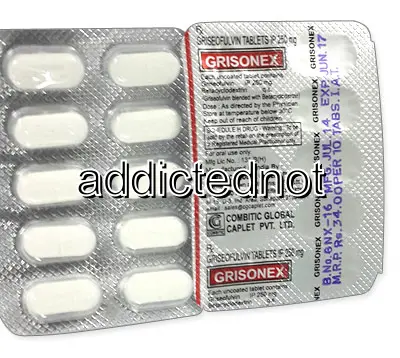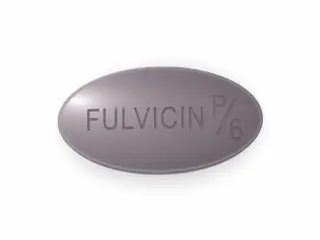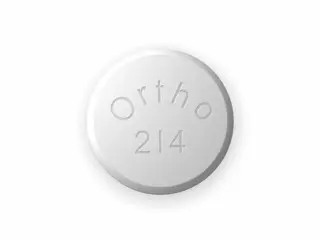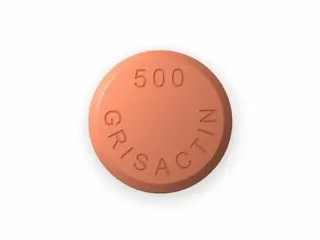Buy Griseofulvin Online in the USA
| Package | Dosage | Price | Price per Dose | |
|---|---|---|---|---|
| Dosage: 250mg | ||||
| 360 pill | 250mg | $414.28 | $1.15 | |
| 180 pill | 250mg | $219.81 | $1.22 | |
| 120 pill | 250mg | $155.56 | $1.30 | |
| 90 pill | 250mg | $128.50 | $1.42 | |
| 60 pill | 250mg | $98.06 | $1.64 | |
| 30 pill | 250mg | $55.79 | $1.84 | |

Griseofulvin Description
Introduction to Griseofulvin
Griseofulvin is an antifungal medication commonly used to treat fungal infections of the skin, hair, and nails. It is derived from a type of mold called Penicillium griseofulvum. This medication has been in use for many decades due to its effectiveness in combating dermatophyte infections. It works by interfering with the fungal cell division process, ultimately stopping the growth of the fungus.
Effectiveness and Usage
Griseofulvin is particularly effective against dermatophytes that infect the skin and nails. It is often prescribed for conditions such as ringworm, athlete’s foot, and fungal nail infections. The medication is typically taken orally, with treatment courses spanning several weeks to months, depending on the severity and location of the infection. Consistency in taking the medication as prescribed is crucial to ensure complete eradication of the fungus and to prevent recurrence.
How It Works
The active compound in Griseofulvin binds to fungal microtubules, disrupting the process of mitosis. This action stops the fungi from multiplying and spreading. Because of this mode of action, Griseofulvin is particularly suited for long-term treatment of fungal infections that are resistant to topical therapies. It penetrates deeply into keratinized tissues like hair and nails, making it effective for infections in these areas.
Potential Benefits
Many users find Griseofulvin to be highly effective when used properly. It can successfully eliminate stubborn fungal infections that do not respond to topical treatments. The medication also has a good safety profile when taken under medical supervision. Its ability to penetrate keratin-rich tissues makes it a preferred choice for nail and scalp infections, which are often difficult to treat with other antifungal agents.
Possible Side Effects and Risks
As with any medication, Griseofulvin can cause side effects. Some common ones include headaches, nausea, dizziness, and gastrointestinal discomfort. Less frequently, some users may experience allergic reactions, skin rashes, or liver function abnormalities. It is important for patients to undergo appropriate tests before starting therapy and to have regular follow-ups to monitor for adverse effects. Pregnant women and individuals with liver disease should avoid this medication unless specifically advised by a healthcare provider.
Interactions and Precautions
Griseofulvin can interact with other medications, including those that induce or inhibit liver enzymes. This interaction can alter the effectiveness of either drug. Alcohol consumption should be avoided during treatment, as it may increase the risk of liver damage and other side effects. Patients with a history of liver problems or blood disorders should discuss thoroughly with their healthcare provider before beginning treatment.
Conclusion
Overall, Griseofulvin remains a reliable antifungal medication for treating certain dermatophyte infections. Proper medical guidance and adherence to prescribed dosages are essential for optimal outcomes. While it offers a targeted approach to stubborn fungal infections, understanding its potential side effects and interactions helps ensure safe and effective use. Regular medical check-ups during treatment are recommended to monitor progress and address any concerns promptly.



